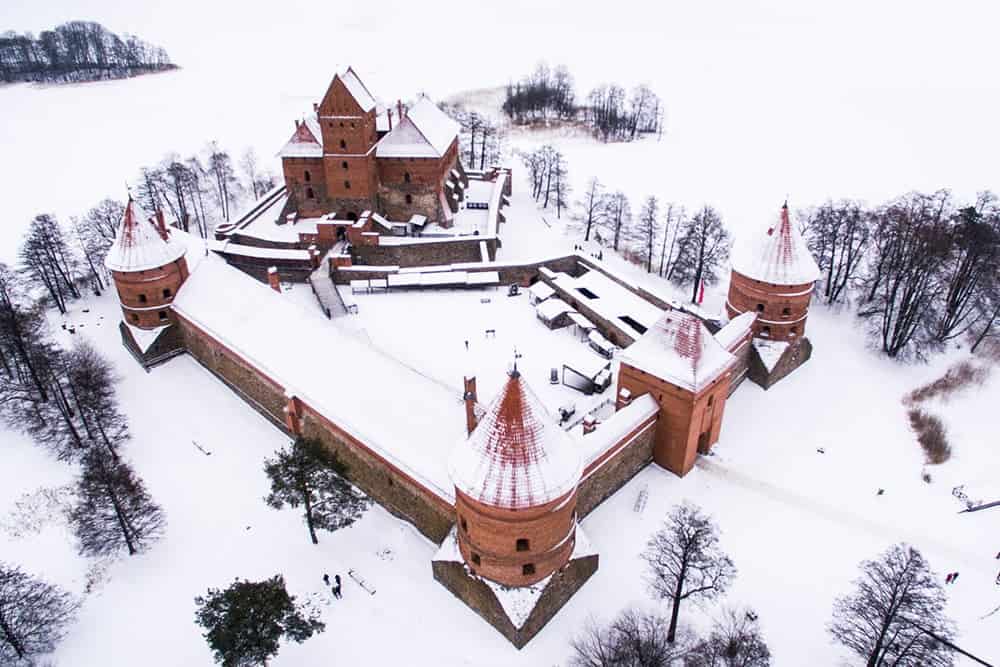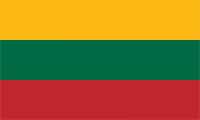Drone Laws in Lithuania
Drone regulations and links for people flying drones in Lithuania.
 Lithuania Drone Regulations
Lithuania Drone Regulations
According to Lithuania’s national aviation authority, the Lithuania Civil Aviation Administration (LCAA), flying a drone is legal in Lithuania, but we recommend being aware of and compliant with the drone regulations listed below before doing so.
If you’d like to contact the LCAA directly before you travel with any questions you might have, here is their contact information: caa@caa.lt / +370 5 273 90 38

Why fly a drone in Lithuania? To get great aerial shots like these!
General Rules for Flying a Drone Within the European Union
Luxembourg is a part of the European Union and therefore must abide by the drone regulations put in place by the European Union Aviation Safety Agency (EASA). In addition to these regulations, Luxembourg also has regulations that are country-specific.
Based on our research and interpretation of the laws, here are the most important rules to know for flying a drone within the European Union.
There are three operational categories that determine drone regulations based on the weight of the drone and the intended operation. This section will only cover the Open Category, to see all European Union laws and categories, click here.
A drone can be operated in the “Open “category if:
- The drone has one of the class identification labels 0, 1, 2, 3, or 4.
- The drone was purchased before 1 January 2023, with no class identification label as above.
- The drone has a maximum take-off mass of less than 25 kg (55 lbs).
- The remote pilot keeps the drone at a safe distance away from people.
- The drone will not be operated directly over people unless it has a class identification label or is lighter than 250 g (0.55 lbs). (Please refer to subcategories of operations: A1, A2, and A3 to find out where you can fly with your drone).
- The remote pilot will maintain a visual line of sight (VLOS) or the remote pilot will be assisted by a UA observer.
- The remote pilot will not operate the drone above 120m (400ft).
- The drone will not carry any dangerous goods and will not drop any material.
General Rules for Flying a Drone Within the European Union
Lithuania is a part of the European Union and therefore must abide by the drone regulations put in place by the European Union Aviation Safety Agency (EASA). In addition to these regulations, Lithuania also has regulations that are country-specific.
Based on our research and interpretation of the laws, here are the most important rules to know for flying a drone within the European Union.
There are three operational categories that determine drone regulations based on the weight of the drone and the intended operation. This section will only cover the Open Category, to see all European Union laws and categories, click here.
A drone can be operated in the “Open “category if:
- The drone has one of the class identification labels 0, 1, 2, 3, or 4.
- The drone was purchased before 1 January 2023, with no class identification label as above.
- The drone has a maximum take-off mass of less than 25 kg (55 lbs).
- The remote pilot keeps the drone at a safe distance away from people.
- The drone will not be operated directly over people unless it has a class identification label or is lighter than 250 g (0.55 lbs). (Please refer to subcategories of operations: A1, A2, and A3 to find out where you can fly with your drone).
- The remote pilot will maintain a visual line of sight (VLOS) or the remote pilot will be assisted by a UA observer.
- The remote pilot will not operate the drone above 120m (400ft).
- The drone will not carry any dangerous goods and will not drop any material.
General Rules for Flying a Drone in Lithuania
Based on our research and interpretation of the laws, here are the most important rules to know for flying a drone in Lithuania.
- Drones weighing more than 25 kilograms (55 pounds) must be registered with the LCAA and the drone pilot must be licensed with the LCAA.
- Drones must be kept a minimum of 50 meters (164 feet) from all vehicles, buildings, people, crowds, and places of worship.
- Drones may not be flown over military facilities without permission from the National Defense System. Find information on how to gain approval for flights over military territories on this page of the LCAA website.
- Drones are not permitted within one nautical mile of all airports and three nautical miles from control points without a separate air traffic service provider permit.
- Drones are not permitted within a radius of one to three nautical miles from checkpoints above nearby obstacles such as trees, structures, power lines, etc.
- Drone pilots must maintain a direct line of sight with their drone throughout operations.
- Drones must give way to manned aircraft.
- Drone cannot fly above 120 meters (394 feet) above the ground without approval from the LCAA.
- Drones are prohibited from flying and endanderging aircraft during take-off and landing.
- Drones are not permitted in aerodrome traffic areas (vertical or horizontal boundaries), except when the drone operator has obtained written consent from the aerodronme user and the conditions established by the aerodrome user have been met.
- Objects, liquids, and other miscellaneous materials can only be discharged from a drone when conditions specified by the LCAA have been met.
- Drone operators are required to understand all flight safety information, regulations, local authority requirments, and weather conditions.
- If a drone operator loses control and visual sight of the drone, the nearest air traffic control tower must be called immediatly. Callers must provide their name, location of control loss, flight altitude, and direction the drone was heading. All of the phone numbers are posted on the LCAA website.
For more information on Lithuania’s drone laws, see this page on the LCAA website.
Know something we don’t about drone laws in Lithuania? Send us an email at support[at]uavcoach[dot]com. We are not international aviation attorneys and do our best to keep this page up-to-date for drone pilots, but the reality is that given the pace of the small unmanned aerial system (sUAS) industry and how governments are responding, drone regulations in Lithuania can change throughout the year, and those changes can be hard to track. If we missed something, please reach out to let us know.
Want to get a feel for the kind of footage you could get flying a drone in Lithuania? Here you go:
 Lithuania Drone Regulations
Lithuania Drone Regulations